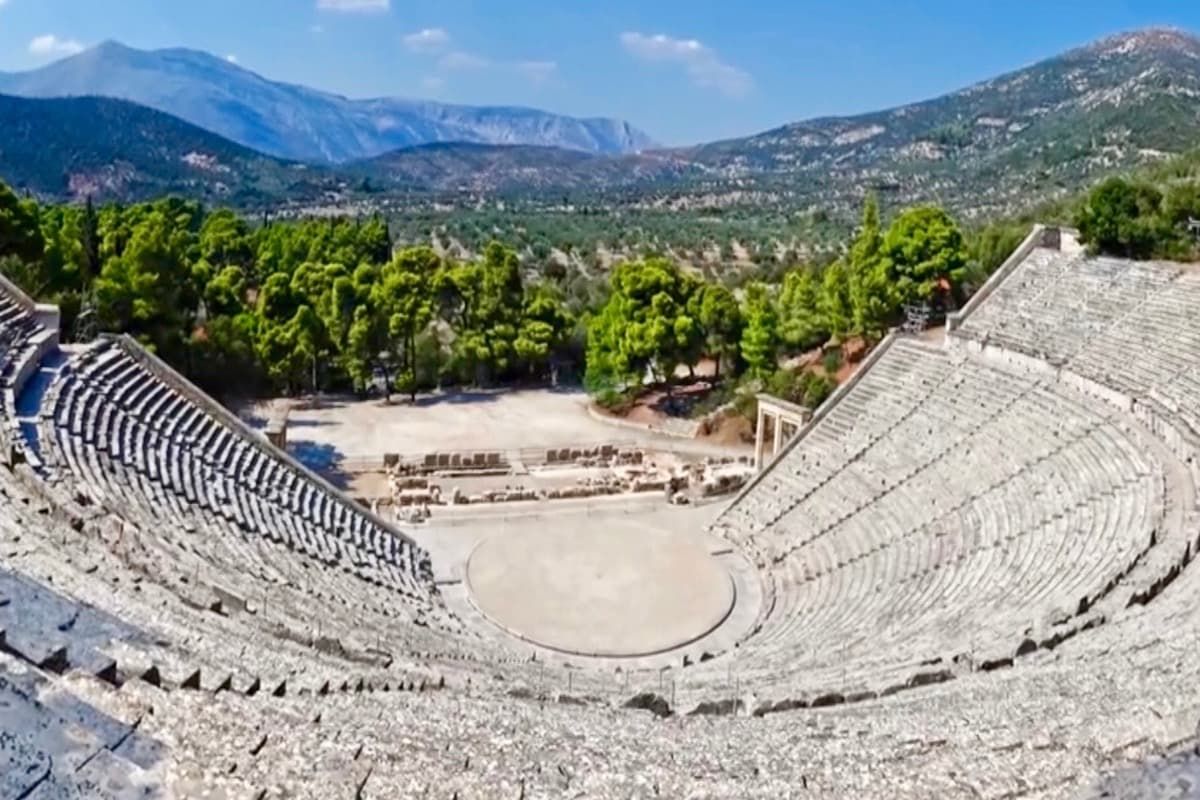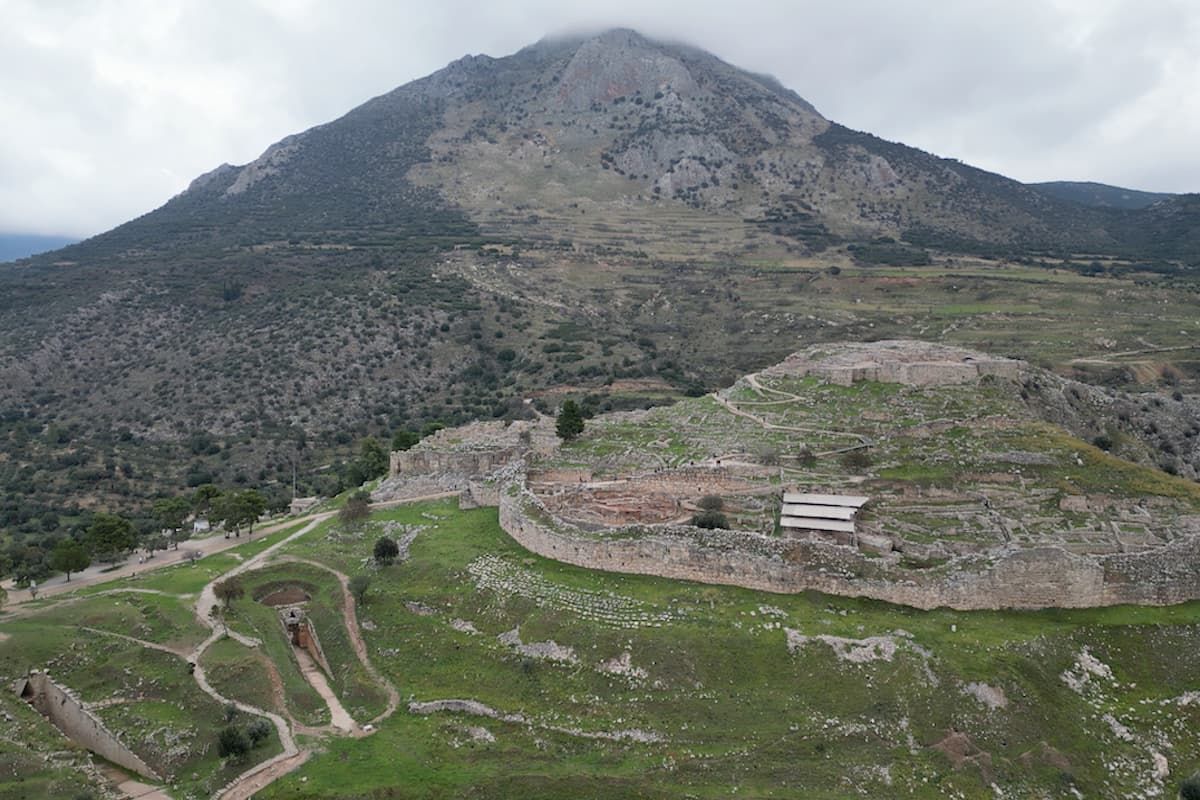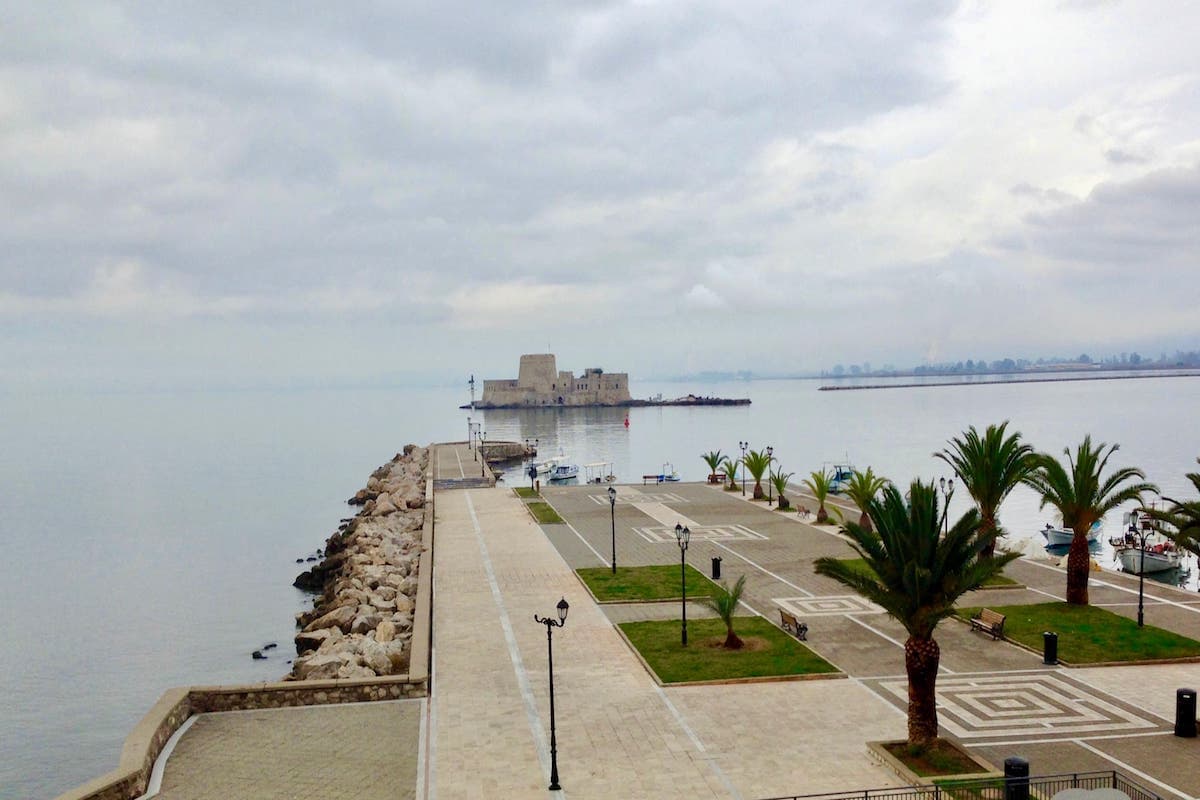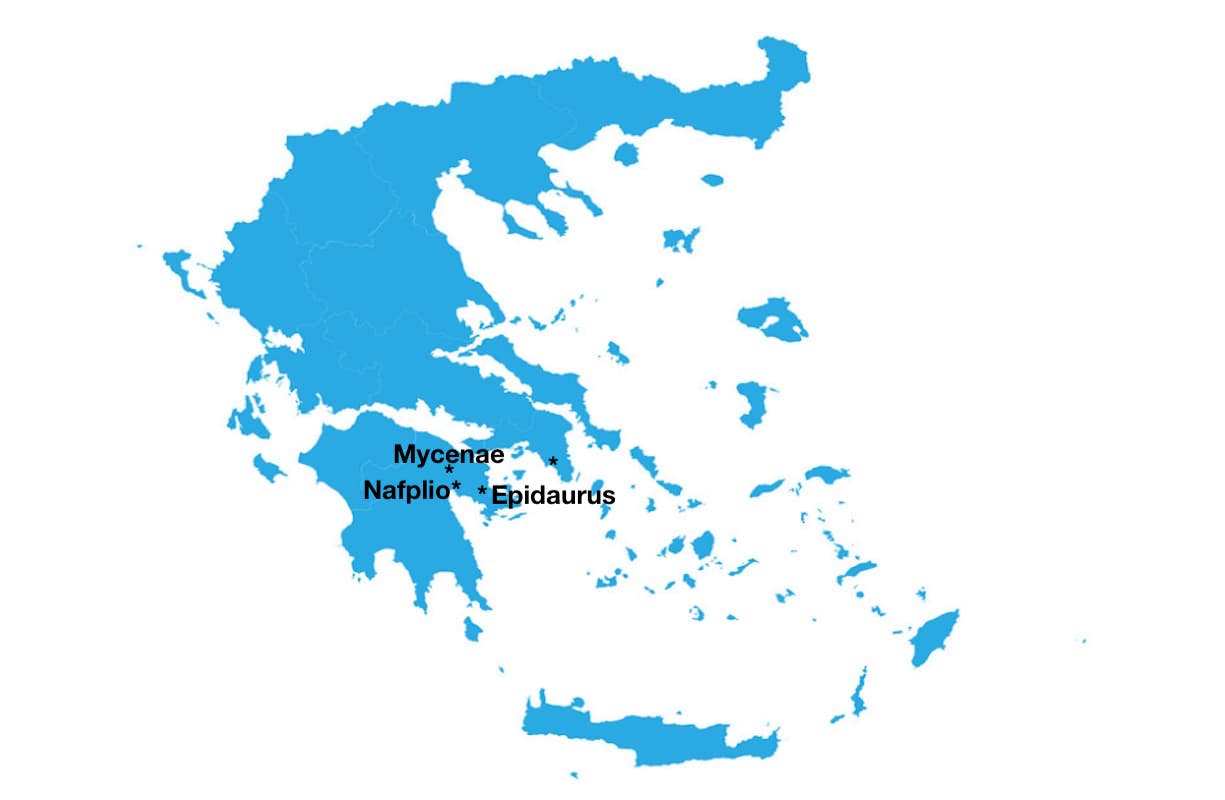EPIDAURUS - MYCENAE - NAFPLIO
Historical Private Tours Greece to Argolis
Private Tours Greece from Athens to Epidaurus, Mycenae, Nafplio. Historical destinations, Daily from Athens
Epidaurus - Mycenae - Nafplio
Argolis is a historically rich region in the northeastern part of the Peloponnese peninsula of Greece. It is home to some of the most iconic and awe-inspiring sites of ancient Greece, including the Theatre of Epidaurus, the Palace of Agamemnon in Mycenae, and Nafplio, which served as the first Capital city of Greece after its independence from the Ottomans. With its proximity to Athens, just a two-hour drive from the city center, Epidaurus, Mycenae, Nafplio in Argolis is an ideal destination for a day tour, and it is in most packages suggested by Private Tours Greece. The area of Argolis is a treasure trove of significant archaeological sites that showcase the rich cultural and historical heritage of Prehistoric, Classical, and Modern Greece. Visitors can explore these sites nearby and witness the evolution of Greek civilization.
Epidaurus
The sanctuary of Asclepieion, located near Epidaurus in the Argolis region, was the most famous healing center in the Greek and Roman world and one of the wealthiest. Asclepius, the protector of human health and medicine, attracted people from all over the Greek world to seek his protection and assistance. This site was once the most famous healing center, boasting over two hundred Asclepieia across the Mediterranean. Despite the official ban on ancient pagan religions in 426 AD, the worship of Asclepius continued at the sanctuary until a series of devastating earthquakes struck in the mid-6th century AD. These earthquakes caused significant damage to the refuge, ultimately abandoning it. Today, visitors can explore the fascinating Archaeological Museum, which has a remarkable collection of artifacts and relics from the sanctuary's heyday. The museum provides a glimpse into Asclepius's ancient healing practices and their religious significance. Another site highlight is the Theatre of Epidaurus, renowned for its exceptional acoustics. This well-preserved theatre can accommodate up to 15,000 spectators and continues to host performances every season under the supervision of the Athens Festival. Attending a play in this historic venue is a truly immersive experience, transporting you back to the days when ancient Greek plays were performed. Of course, only visiting the sanctuary would be complete with exploring the Asclepieion itself. This sacred area was dedicated to Asclepius and was the main healing center. It consisted of various buildings, including temples, baths, and dormitories, where patients would seek treatment and spend the night hoping to receive divine healing. Overall, the sanctuary of Asclepieion offers a unique opportunity to delve into the ancient world of healing and spirituality. Its historical significance, stunning surroundings, and cultural events make it a must-visit destination for history enthusiasts.

Epidaurus
The worship of Asclepius was established in the sixth century BC as a protector of human health and personal happiness.
Mycenae
The ancient site of Mycenae has a deep and rich history dating back to the Neolithic period, around the seventh millennium BC. However, very little remains of this early settlement are found due to the continuous reoccupation that lasted until the historical period. Most visible structures today were built during the Late Bronze Age 1350 to 1200 BC when the site was at its peak. During this time, the first families of rulers and aristocrats appeared at Mycenae, around 1700 BC, and the construction of the palace and fortification wall began in 1350 BC. The wall was built using Cyclopean masonry, and approximately one hundred years later, a new wall was erected to the west and the south of the early one. This new wall included the Lion Gate, the city's monumental entrance and fortification. The fortified area of the city had a religious center, which was used for ancestral cults after being renovated. One of the most famous structures in Mycenae is the Tholos tomb, known as the Treasury of Atreus. This impressive tomb features gigantic lintels and a tall beehive vault, and it was likely built during the same period as the religious center. Despite its grandeur, the site was abandoned in 1100 BC, and the hill was sparsely inhabited until the Classical period. During the Archaic period, a temple dedicated to Hera was erected on the top of the hill. However, in 468 BC, Argos conquered Mycenae after the Persian Wars, and part of its fortification wall was destroyed. In the Hellenistic period, the Argos founded a village on the hill and repaired the walls. A small theatre was also erected over the road of the Tholos tomb of Clytemnestra. In 1874, Heinrich Schliemann began excavating, and in 1876 he uncovered five graves. His work was continued in 1876 and 1877. The project for the Restoration Conservation Presentation of the Monuments of the Acropolis of Mycenae and its Greater Area began in 1998.

Mycenae
Heinrich Schliemann began excavating in 1874, uncovered five graves in 1876, and continued his work in 1876 and 1877.
Nafplio
Nafplio, located in the Argolis area, is considered one of Greece's most beautiful and romantic towns. After gaining independence from the Ottomans, it served as the first capital of the newly independent Greek state from 1823 to 1834. According to mythology, Nafplio was founded by the son of the God Poseidon and the daughter of Danaus Anymone, Nafplios. The Town has a rich history dating back to the prehistoric era, with soldiers from Nafplio participating in the Argonauts expedition and the Trojan War.
Syntagma Square has several historic buildings and monuments in the city's heart. These include two Turkish mosques, one previously used as a Mutual Learning School and now serves as a cinema/theatre, and the other which housed the first Greek Parliament. Additionally, the Archaeological Museum houses essential artifacts from the Prehistoric and Mycenaean Era, while the Municipal Gallery is also a notable building in the area. The church of Agios Spyridon stands very close to the modern city. It was in front of this church that Governor Ioannis Kapodistrias was assassinated. The church of Agios Georgios is over 1000 years old. The Palamidi Castle is built 216m above sea level. You must climb its 999 steps carved into the rock to reach it. The most photographed spot in Nafplio is the small Venetian fortress, Bourtzi, standing on the rocky islet of Agioi Theodoroi.

Nafplio
In the old Town stands the church of Agios Spyridon, in front of which Governor Ioannis Kapodistrias was assassinated on September 27, 1831.





